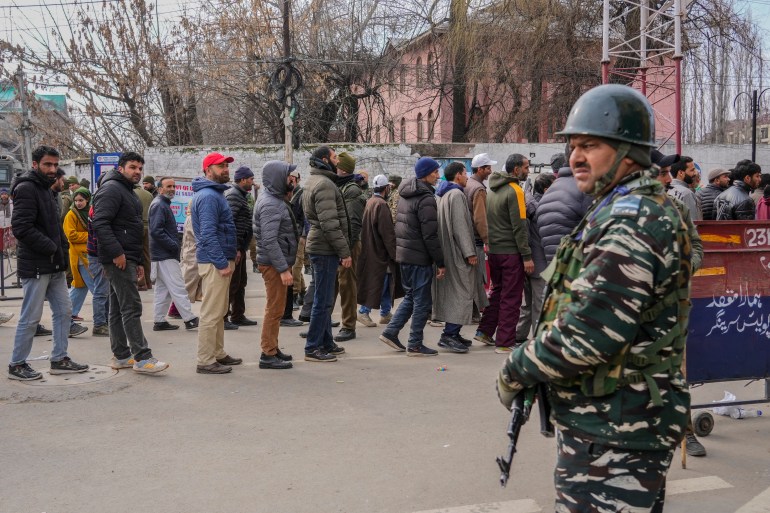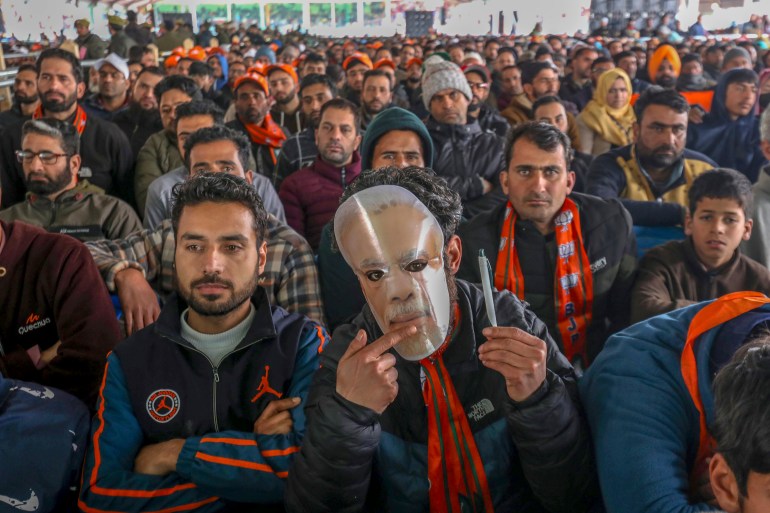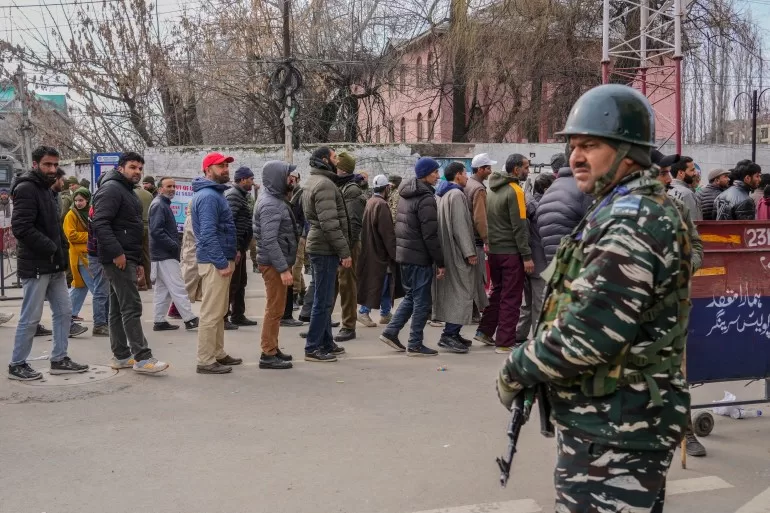“I am working hard to win your hearts,” Modi told a rally on Thursday in Srinagar, where he announced a slew of developmental projects worth $777m, which he said will boost the agro-economy and tourism in the disputed region.
“Today, there is no Article 370, hence the talent of the youth of Jammu and Kashmir is being fully respected and they are getting new opportunities. Today there are equal rights and equal opportunities for everyone here,” he said, referring to the constitutional provision that granted a special status to the Muslim-majority region, also claimed by neighbouring Pakistan.
“The country is seeing these smiling faces of yours … [and] feeling relieved to see you all happy,” he said, concluding his 27-minute address by wishing people well during Ramadan, the Muslim holy month that begins next week.

But independent analysts and many Kashmiris said they were left disappointed by the PM’s speech, which many had anticipated might have offered more substantive political messaging aimed at reaching out to a region that New Delhi and Modi’s party have long had a tense relationship with.
The 2019 break
For decades, the abrogation of Article 370 was a core agenda of Modi’s Hindu majoritarian Bharatiya Janata Party (BJP) in order to “fully integrate” the region with the rest of India. The article allowed the region to have its own laws and barred outsiders from buying land or getting local jobs.
But Modi’s government split the former state into two territories – Ladakh, and Jammu and Kashmir – and brought them under New Delhi’s direct rule. To curb street protests against the action, the government launched a security crackdown and curtailed civil liberties and press freedom.
In defence of its controversial move, the government said New Delhi’s direct rule would bring progress to Kashmir and eradicate the armed rebellion against New Delhi’s rule that began in 1989. Tens of thousands of people, mostly civilians, have been killed in the conflict since, turning the Himalayan territory into one of the most militarised regions in the world.
But the BJP’s move was opposed by Kashmiris, who feared the government was trying to change the region’s demography by allowing people from other parts of India to settle or invest there.
“This is the new Jammu and Kashmir which we had been waiting for decades,” Modi said in remarks made ahead of the national election in April and May in which he is seeking a third straight term.

‘Disappointed the audience’
Residents, however, said they had low expectations for the prime minister’s visit – and that their grievances were not addressed in his speech.
“The highest expectation was the restoration of the statehood. The second could have been the restoration of democracy since the central rule has been far too long. People don’t have a voice here,” said a 33-year-old Kashmiri who did not want to reveal his identity over fears of reprisal by the authorities.
Indian-administered Jammu and Kashmir has not had regional elections since 2014. The government formed then was dissolved by the BJP’s central government in 2018.
In December 2023, the Supreme Court, while upholding the scrapping of the special status, said state elections must be held by September this year. But on Thursday, Modi did not give any assurances about holding the vote in his speech.
“Two things people wanted to hear was the dates of elections and statehood,” New Delhi-based academic Radha Kumar, who has worked extensively on the Kashmir conflict, told Al Jazeera.
“On both those points, PM Modi disappointed the audience,” she said. “One would expect he would give reassurance that the elections would be held by the deadline. Surprisingly, there was no reference.”
But Zameer Ahmad, a BJP member from Kashmir’s Kupwara district, defended Modi’s visit, saying it gave the residents a chance to talk about their issues. “We have a future with the BJP because they will win elections. I think the PM will listen to us and solve our problems,” he said.
Government employees mobilised as crowd
Modi’s BJP is not a key player in Indian-administered Kashmir. Multiple government employees, including teachers, said their departments and offices had effectively ordered them — around 20,000 people in all — to attend Modi’s rally. Many schools in the region were closed for the day.
“We hardly got any sleep and left home at 4am. It was a job compulsion,” Ahmad, a 45-year-old employee from Anantnag district, 50km (31 miles) from Srinagar, told Al Jazeera, outside the football stadium in the city where the event was held.
A female teacher from southern Kashmir said she felt no excitement for the event. “I can’t say anything. We were directed by the administration to come.”
Mehbooba Mufti, the last elected chief minister of the region, criticised the government for mobilising its employees for the rally.
“This visit is only meant to address and drum support amongst the BJP’s core constituency in the rest of India for the upcoming parliament elections,” she posted on X.
